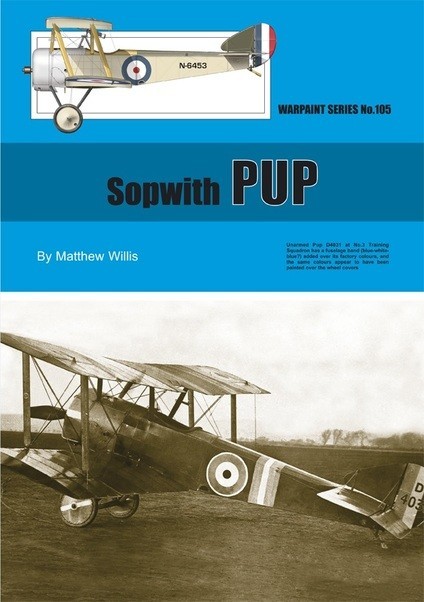SOPWITH PUP
WARPAINT N.105
Autore: Kev Darling
Codice: 244DM021105
Serie di illustratissime monografie, dedicate agli appassionati di aeronautica e ai modellisti, ogni volume presenta una panoramica dettagliata dell’aereo preso in esame: la storia completa, piani in scala 1/72, disegni in dettaglio, lista di kit, decals e accessori, superbi disegni a colori di camouflage, fotografie a colori e in bianco e nero, lista completa della produzione, elenco degli squadroni e delle unità, lista dei numeri di serie e dei codici dei singoli aerei.
The Sopwith Pup, as it is unofficially but universally known, was one of the first true British fighter aircraft, and one of the most significant of the First World War. It played a key part in maintaining control of the skies over the Western Front during and after the RFCs toughest period, Bloody April, 1917. Its superb flying qualities kept it competitive as ever-faster and more powerful opposition appeared, and it played an unglamorous but important role in the defence of the UK against zeppelin and heavy bomber attacks, and was fundamental to the development of ship-based aviation. With the very well-established categories of military aircraft that are familiar today, it is hard to comprehend the world in which the Pup was born, where these clear delineations did not exist. Certainly the idea of the fast, agile single-seat fighter was barely thought of when the Pups outline was first chalked on the floor of the experimental workshop at Sopwiths Kingston-upon-Thames premises in 1915. The new aircraft was known as the Sparrow, was powered by a 50hp Gnome rotary. Test pilot Harry Hawker took the aircraft to Brooklands and amazed trainee RFC pilots by flying it under the bridge across the Byfleet Banking. It was fully aerobatic and capable of a speed just shy of 85mph despite the low engine power. It is unclear whether Sopwith intended the machine to form the basis of a military aircraft but in any event, its performance and handling, even on such low power, must have recommended it for that purpose. The Sparrow therefore became the progenitor of the aircraft that would become the Pup. It was around the time of the prototypes first appearance that the Pup seems to have gained its popular name. Brigadier-General SeftonBrancker, then the RFCs Director of Air Organisation, is reputed to have remarked, on seeing the prototype Scout beside its larger sibling at Brooklands, Your 1œ Strutter has had a pup! For all its value as a front line fighting aeroplane, the Pup had a potentially even greater impact on the development of naval aviation; in particular, the sometimes tortuous path of launching aircraft from, and returning them safely to, ships at sea. Moreover, the Pup became one of the more successful operational aircraft in this fledgling area of combat. This is the first WWI title in the series and includes all the usual Warpaint features historical text, modellers glossary, colour artwork by Richard Caruana and a three page colour walkaround by author Matthew Willis.
INGLESE
Interamente illustrato
128
21 x 30


